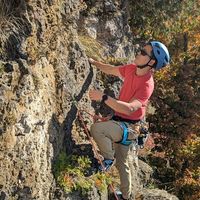My the first visit to Swiss crags.
Pics and trips
1
Posts
1
Posters
123
Views
-
My the first visit to Swiss crags. Eppenberg near Aarau.
Local climbers did a very good job taking care of the place.
Pitty that we didn't have more time. Climbing was our lowest priority of the day.



-
 D devnull moved this topic from Uncategorized on
D devnull moved this topic from Uncategorized on